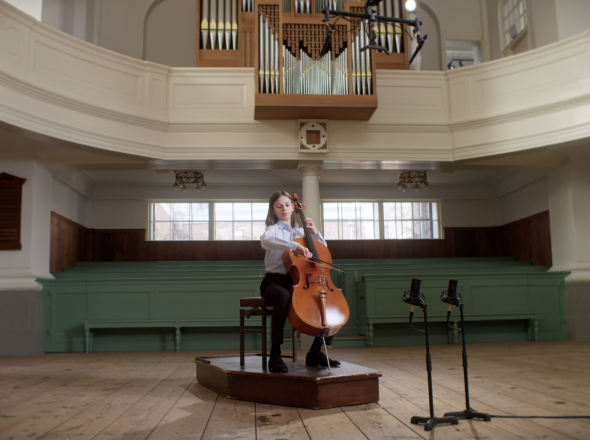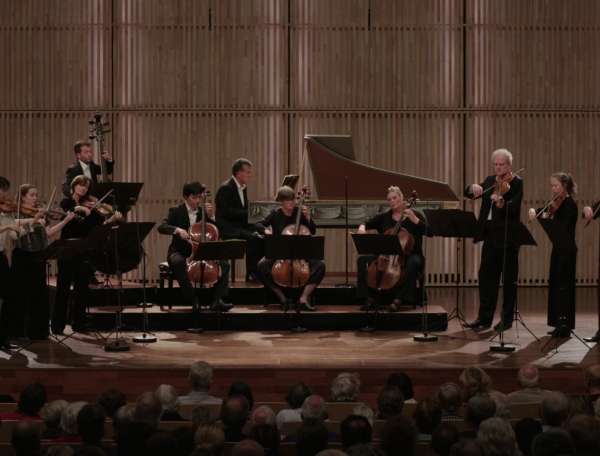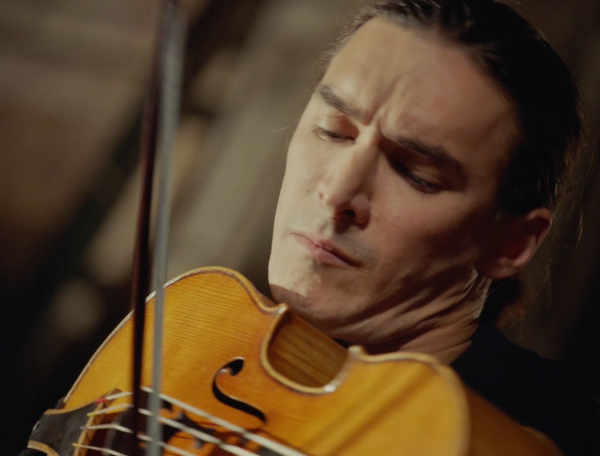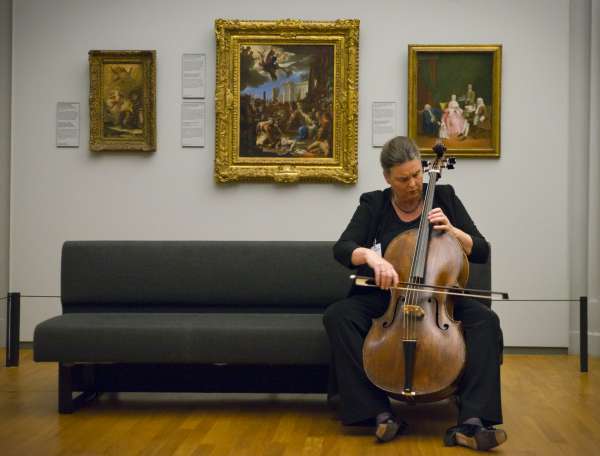
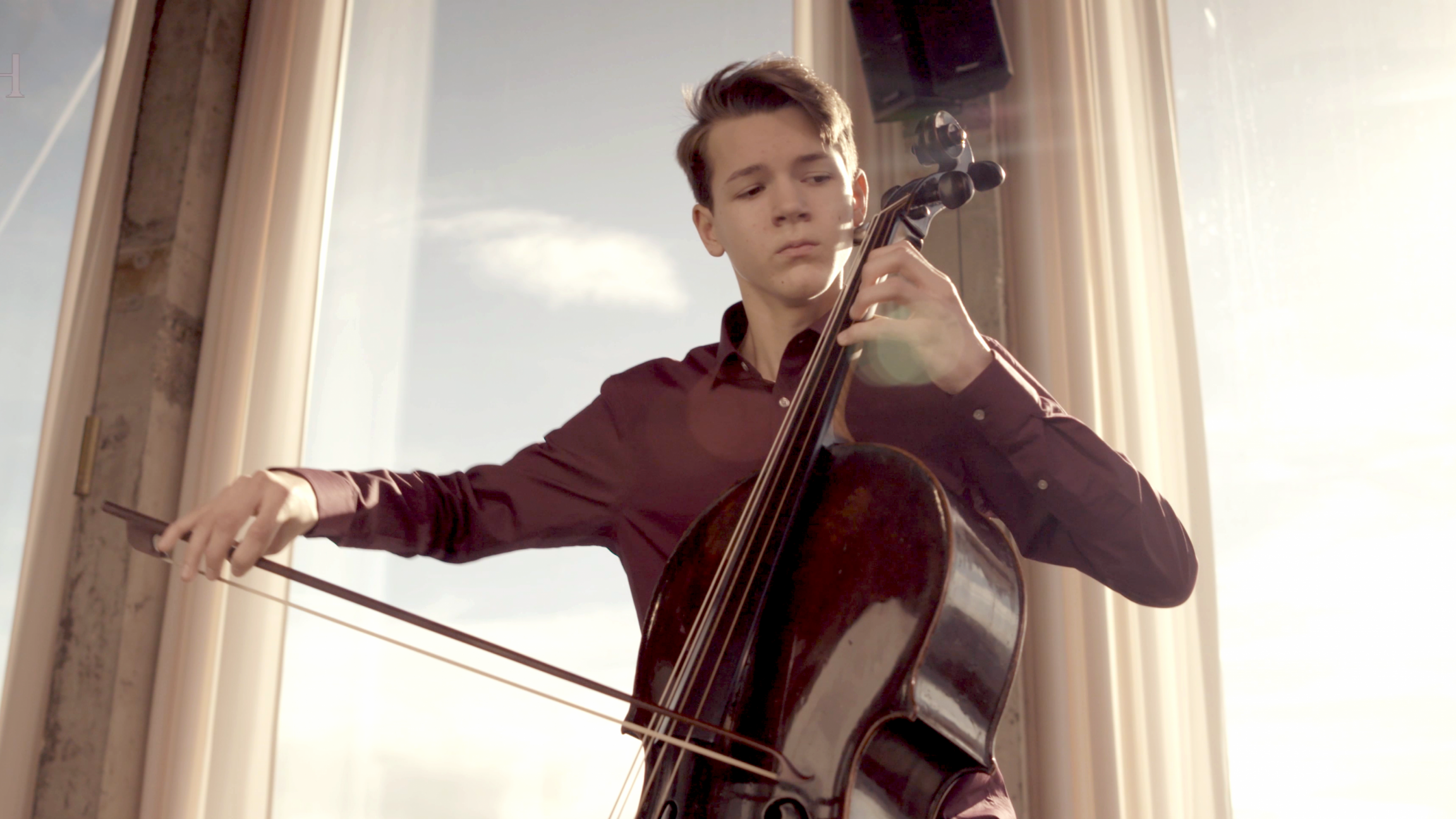
Cello Suite no. 3 in C major
BWV 1009 performed by Reinier Wink
The Loft, Amsterdam
Behind the music
Cocky self-assurance
Does this suite symbolise young adulthood?
What a wonderfully optimistic opening. Like a playful puppy, the cellist races down a scale, from a high C to one lower, and then takes a diversion down another octave to the lowest open C string. After the dark Cello Suite no. 2, this Cello Suite no. 3 in C major is a continuation of the good-humoured tone of no. 1, although its mood is one of even cockier self-assurance. Cellist Colin Carr sees the six suites as “Bach’s children at various stages of life”. Could no. 3 symbolise an overconfident student? Cellist Reinier Wink, the student of Bach Society cellist Lucia Swarts, who recorded this cello suite for All of Bach, thinks that in any case the key of C major suits his own stage of life, saying “young people are simply more often cheerful”.
After the clear beginning of the Prelude, Bach starts playing a game with the listener, by apparently shifting the first beat of the bar, for example. There is a wonderful pedal point two-thirds of the way through the piece, where Bach places a whole series of modulations above a sustained dominant G.
The Allemande has a light-hearted character, and with its many strong accents is one of the least refined allemandes in the six suites. Like the Prelude, the jumpy Courante starts with a descending scale at full galop. Things calm down in the Sarabande, a slow court dance with the accent on the second beat. Like many sarabandes in the cello suites, this one in Cello Suite no. 3 is characterised by many double stops and broken chords over all the strings. It is in stark contrast to the apparent simplicity of the Bourrée, with a slightly oriental-sounding Bourrée II in C minor. And the closing Gigue raises the roof, of course, with the cellist alternating big leaps with short sprints.
Six Cello Suites, BWV 1007-1012
The Six Cello Suites by Johann Sebastian Bach belong to the Old Testament of cello literature. Every cellist who looks at the music immediately feels how naturally the notes are draped around the strings of the instrument. Yet there are many questions and discussions about these Suites a Violoncello Solo senza Basso. Did Bach really write the music for cello, or at least for cello alone? And when did he write it? At the court at Cöthen or earlier? The suites follow a path from simplicity to increasing virtuosity.
- BWV
- 1009
- Title
- Cello Suite no. 3 in C major
- Instrument
- cello
- Genre
- chamber music
- Serie
- Six cello suites
- Year
- between 1717 and 1723
- City
- Köthen
With support from
ARANIDI, Ammodo
Extra videos
Vocal texts
Original
Translation
Credits
-
- Release date
- 20 April 2018
-
- Recording date
- 8 October 2017
-
- Location
- The Loft, Amsterdam
-
- Cellist
- Reinier Wink
-
- Cello
- unknown, made in Austria
-
- Directors
- Gijs Besseling, Leonard Besseling
-
- Editor
- Leonard Besseling
-
- Music recording
- Guido Tichelman, Pim van der Lee
-
- Music edit and mix
- Guido Tichelman
-
- Camera
- Danny Noordanus, Gijs Besseling
-
- Lights
- Daan de Boer
-
- Lighting assistant
- Denny Schoute
-
- Camera assistant and data handling
- Eline Eestermans
-
- Interview
- Leonard Besseling
-
- Camera interview
- Gijs Besseling, Danny Noordanus
-
- Sound interview
- Noah Pepper
-
- Editor interview
- Gijs Besseling
-
- Lights interview
- Danny Noordanus
-
- Production
- Jessie Verbrugh
-
- With support of
- ARANIDI, Ammodo
Cello Suite no. 3 in C major
Two recordings of this Cello Suite have been made for All of Bach. You can view both recordings here.
Discover
Help us to complete All of Bach
There are still many recordings to be made before the whole of Bach’s oeuvre is online. And we can’t complete the task without the financial support of our patrons. Please help us to complete the musical heritage of Bach, by supporting us with a donation!

